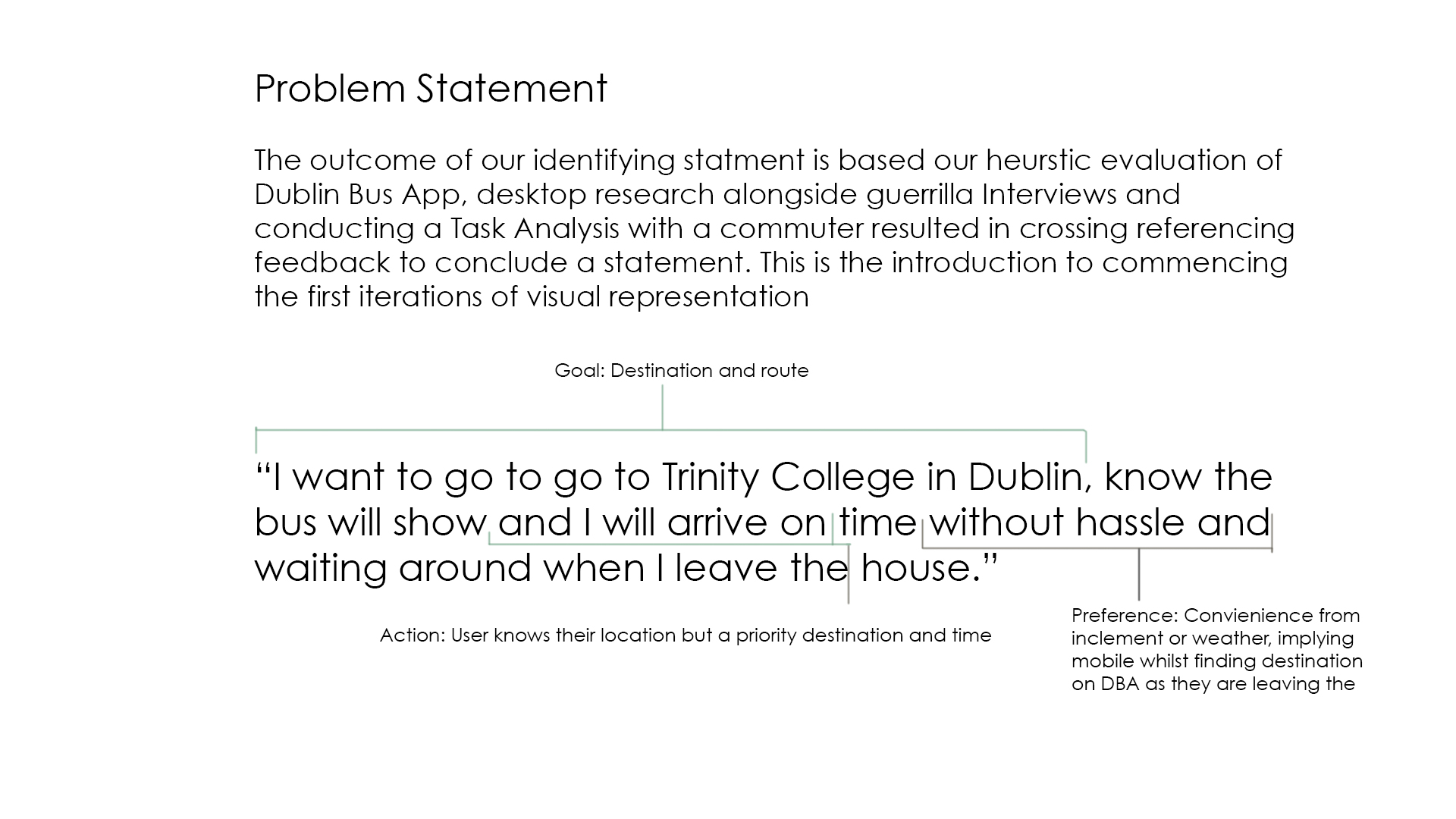User Research
During our second week we commenced user research. We looked to online resources and direct interaction with users for conducting research. We shared the results via Slack of our results and consulted our approach and feedback throughout.
How current users responded to the app was our pivotal starting point to tackling the Dublin bus app. We sourced App reviews, Online forums and comments to elect what issues caused commuters problems.
There were obstacles that were orientated around development problems of inaccurate real time info and crashing (see source). We searched for reviews of vital features that increased engagement and clarity to the user on their journey based on our heuristic evaluation.
The feedback from online reviews differed across platforms.. Whilst the average rating was 3.1 on the Google App Store, the Apple IOS store showed a 1.9 out of 5 average.
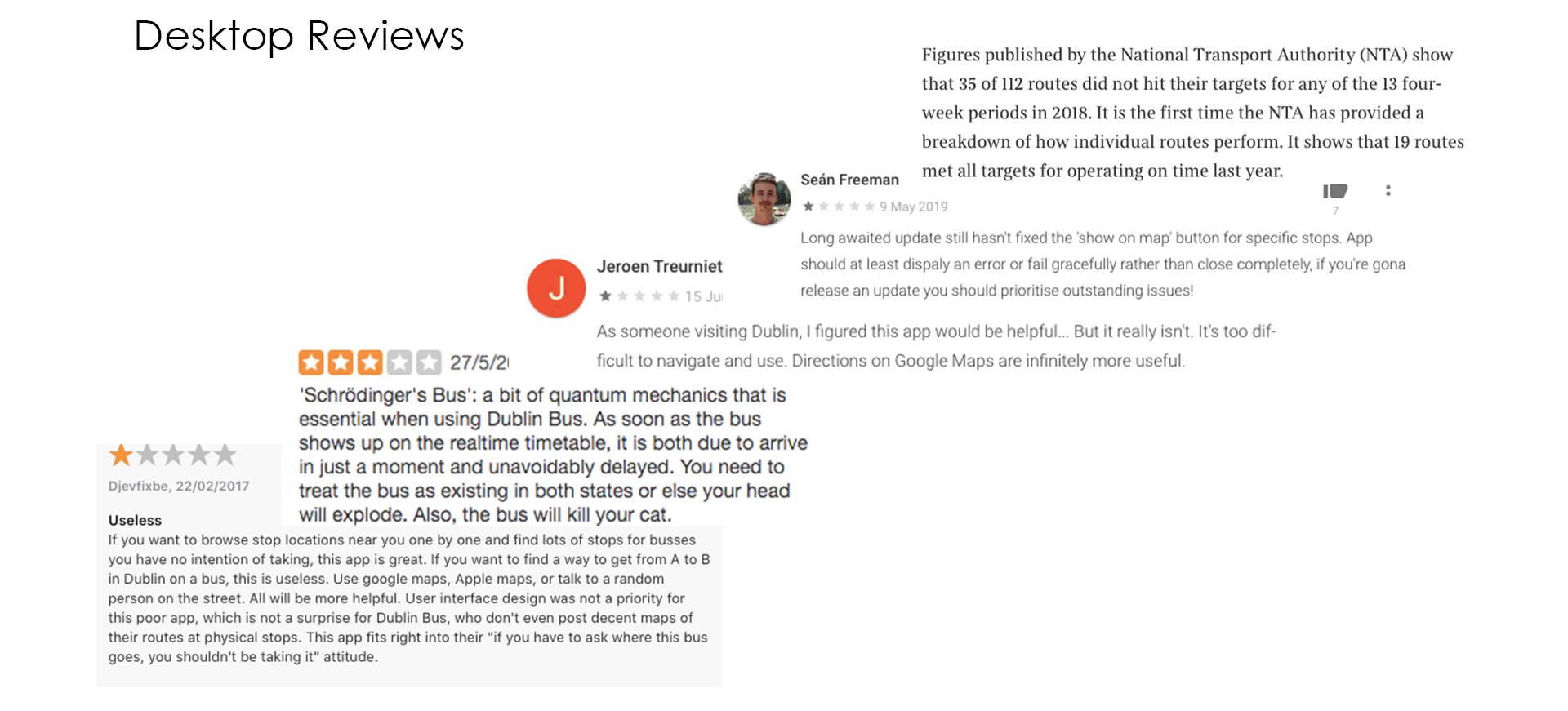
App Review


- Users stated issues with a bad UI interface, crashing, hard to navigate, too slow, not accurate with real life data where the determinate indicators were inaccurate, complex.
- Users found that there were differences across devices and a long user journey to complete the task of finding their route.
Further, desktop research identified a positive feature for users: Favourites, whereby they could save their routes into a single folder in a list display. Users stated that the customised favourites list enabled them to get their information faster.
Competitor Analysis
Our evaluation required one of Nielson’s heuristics; consistency and a comprehensive understanding, of industry standard to contextualise user expectations. We observed other transport applications to observe how commuters interact with technology reliably and confidently so that we could meet the users needs and create and develop a great experience.
- .Airbnb
- .N26
- .Moovit

By comparing other applications such as Moovit, Uber and Google-maps for feature breakdown we found that Highlights, Recent and Favourites were part of the customised user experience on Moovit. Controlled interaction for commuters on Google Maps are filters of ‘Arrive by’ and ‘Depart by’ options. Uber sends notifications to their passengers allowing for autonomy prior to and during their journey. These pivotal features give the commuter mobility which upon inquiring with Dublin Bus App users through interviews, is lacking.
After interviewing our participatants for the Dublin bus app we categorised their answers into components that would we judged to be usefull based on our chosen factors of Heuristic Evaluation of performed on the Dublin bus app. The segmetnation chart provides the responses provided by the users collated. From my observation the collected answers charted indicate that Dublin features are not utulised to their copacity or do adhere to the priority of the application of which commuters use the app despite varients of use and background..


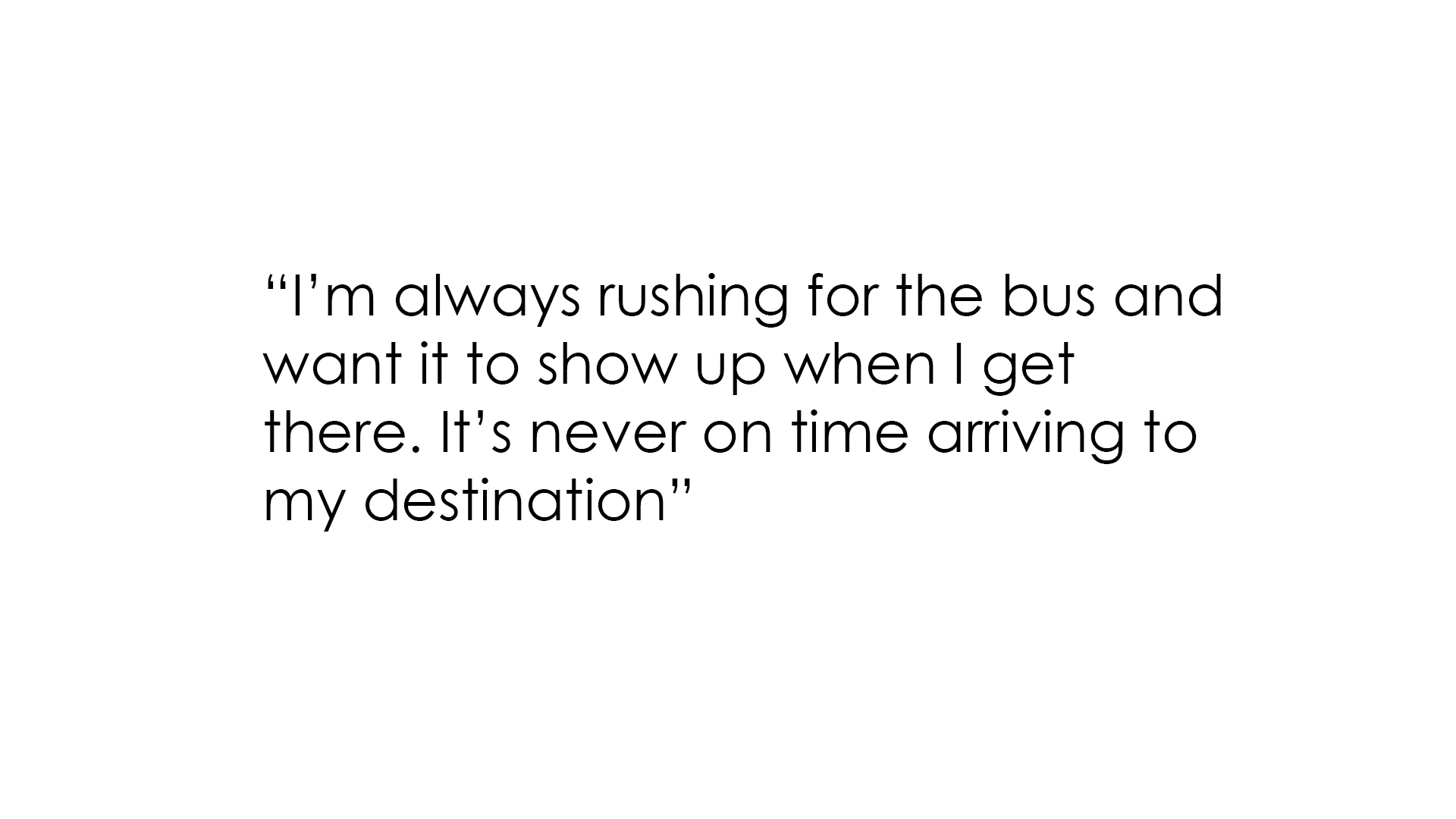
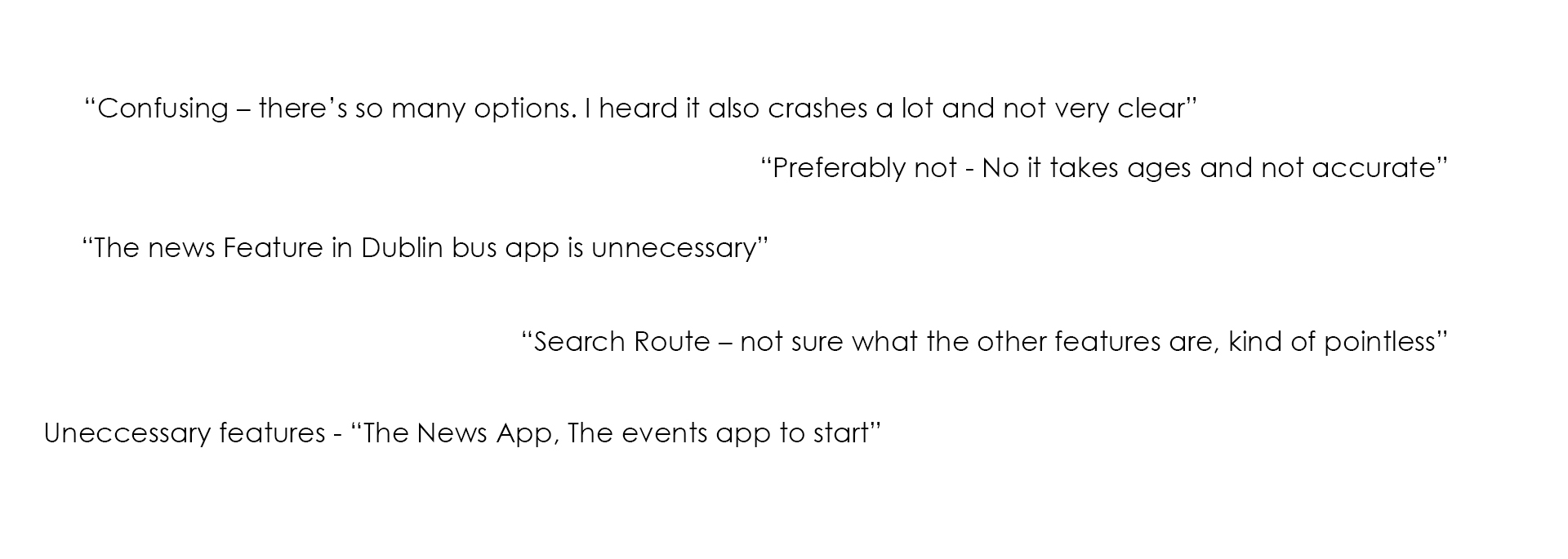
We constructed an affinity map exercise as per the user experience best practice to help us to identify the most important features to a persona commuter by conducting market research alongside competitor analysis according to Adlin and Pruitt (2010, p. 38) . We harnessed the visual hook of existing features on other applications to pair with our chosen personas’ to make more relevant enquiries to furthering our app design.
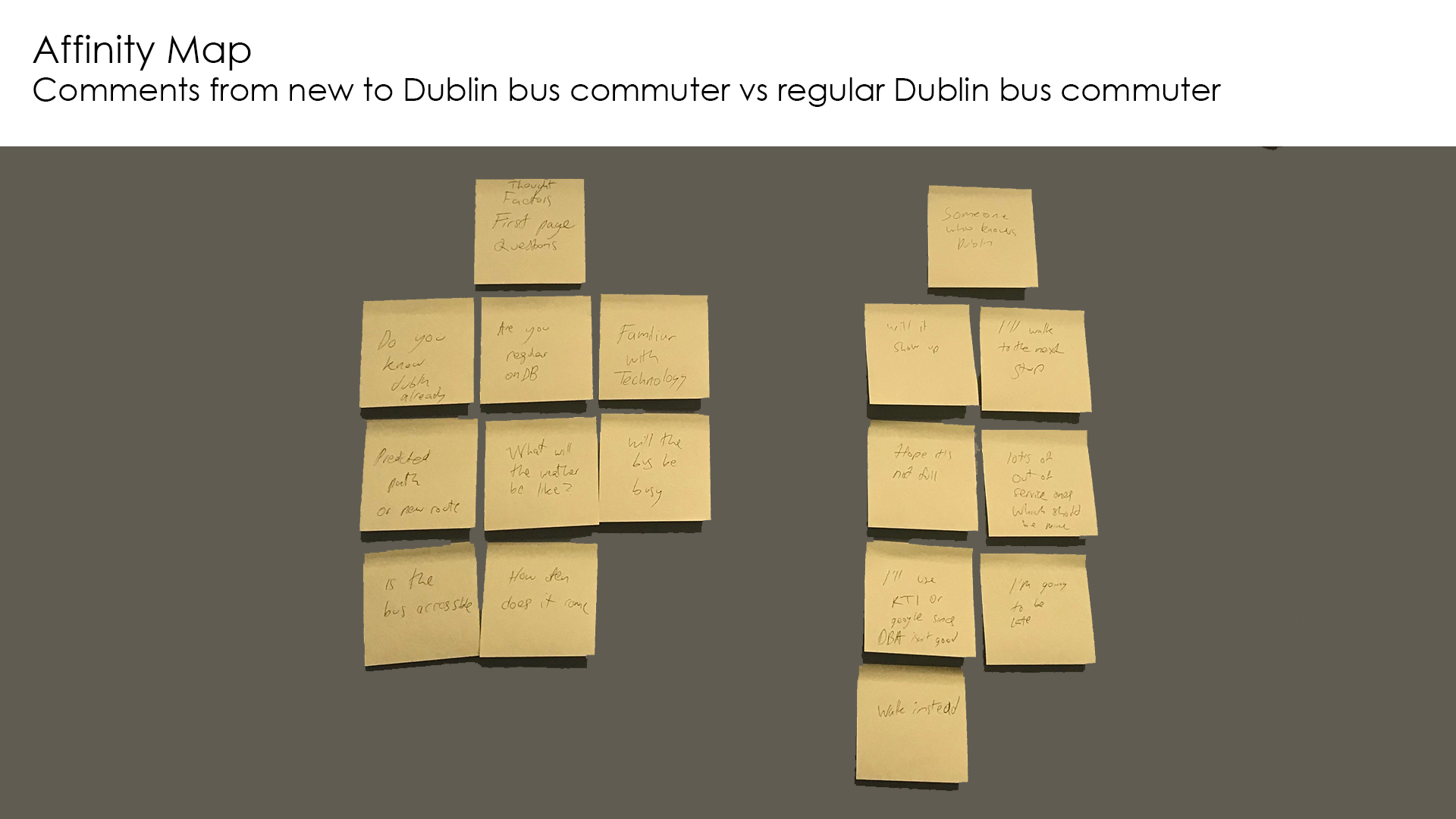
Constructing User Persona
We collated user reviews and feedback interviews from conducting on site interviews and inviting participants to perform tasks on Dublin bus app and together. Julie took the persona of Jim who was a corporate finance city working within Dublin regularly commuting, Rory created a persona called Margaret who wished to have the most fastest and easiest route online to get from A-B across this city. I looked the a student who wished to take the bus route with the most catchment bus stops indicating transfers with the most viable options to continue the route, not just the fastest. Together we went with Margaret as our Persona who I took the attributes for the blog under the name Catherine.
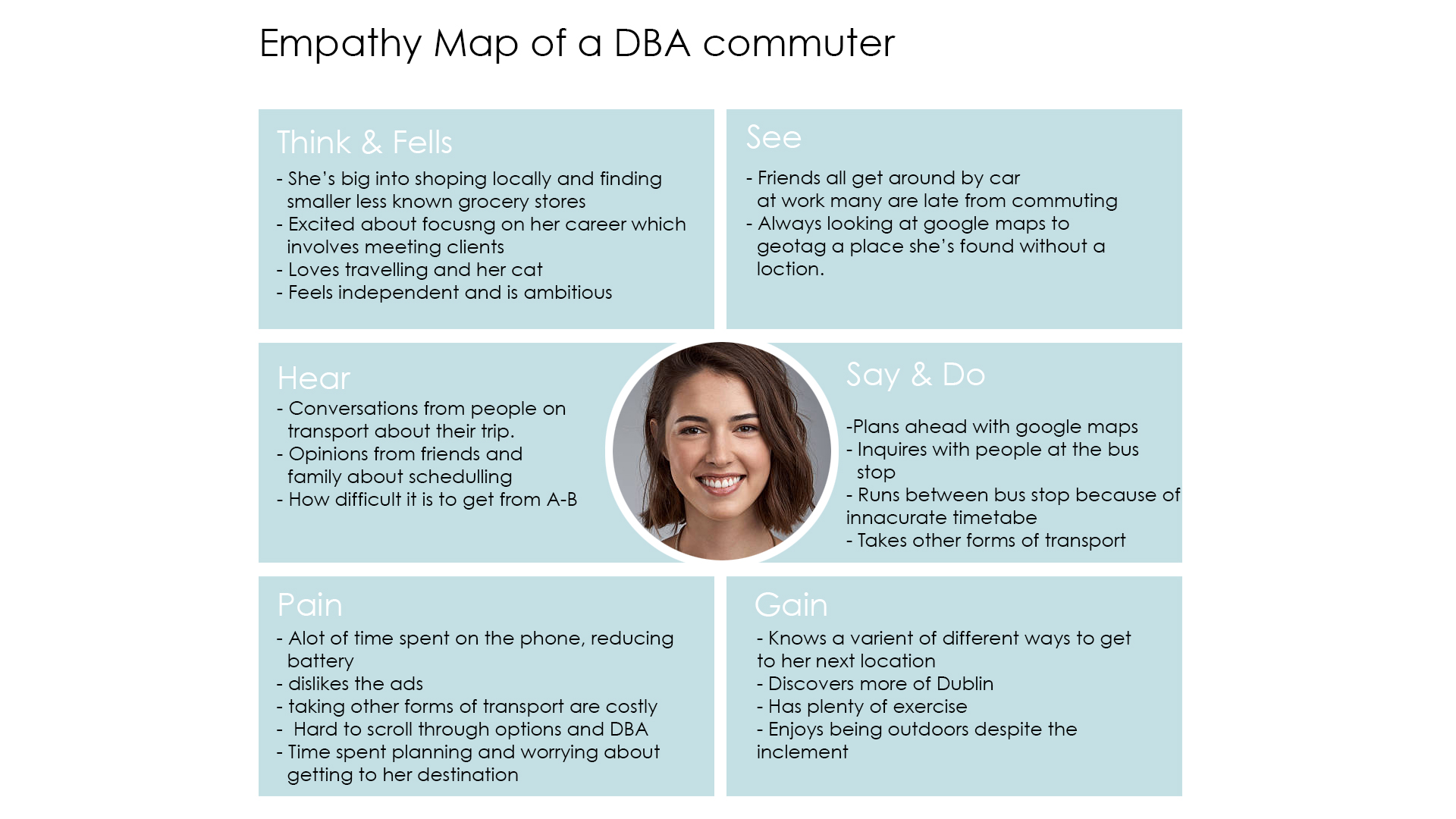
Our User Persona was given a scenario in which they had to complete a task engaging with the product, The purpose of a scenario is to help the design team visualise how a target user would interact with the product in real life,(Lyst, 2017). Her selected Scenario was based on interacting with the Journey Planner on Dublin bus app. This interaction is the antecedence of most the user journey on the Dublin bus through the city when using the app.
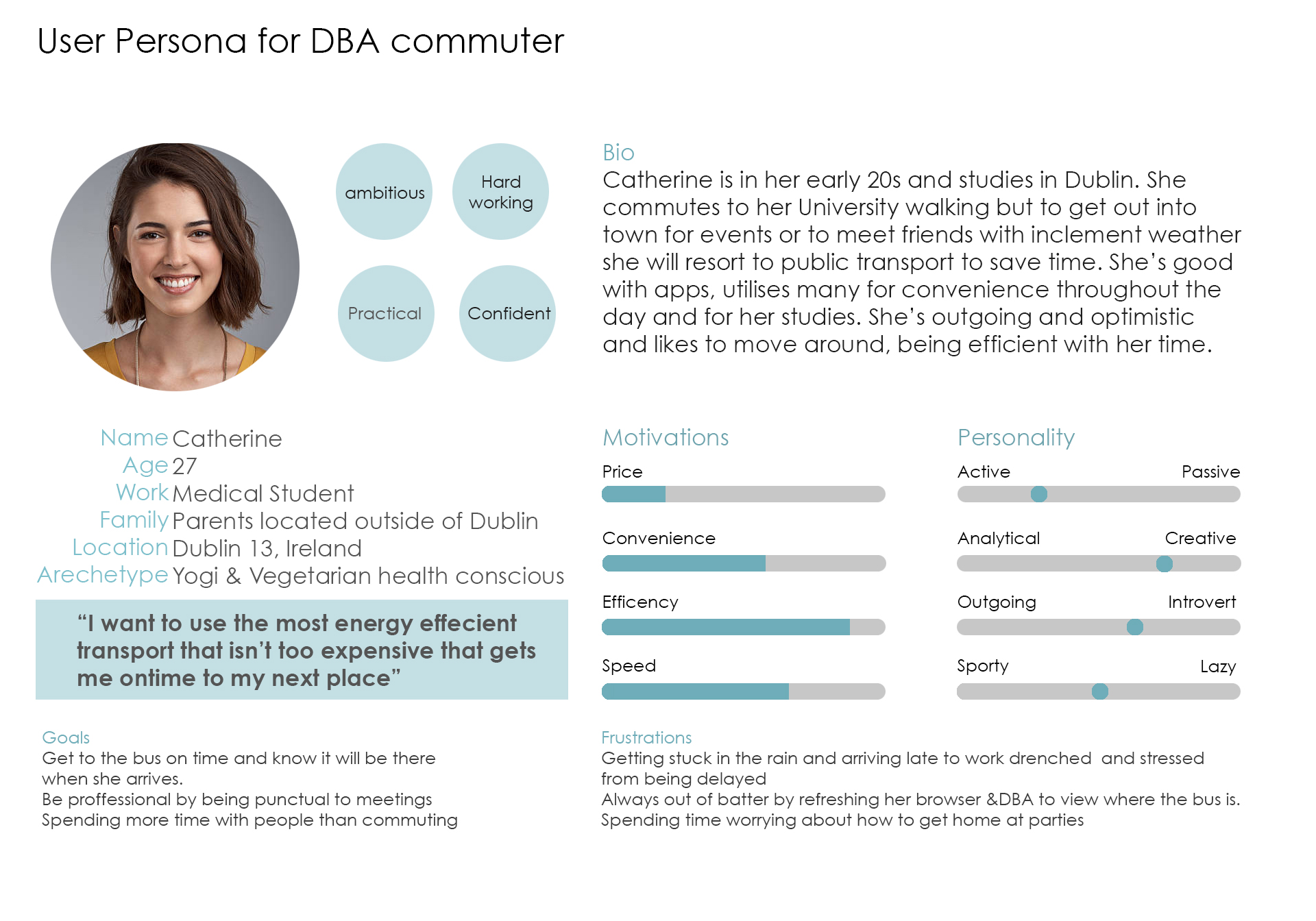
Margaret is going to go and visit one of her kids in their new apartment in Dundrum. She can drive but finds Dublin intimidating to Drive in so will use public transport. She knows the bus to bring her to Dublin goes every even hour from the town but she doesn’t know how to get to Dundrum once their.She downloads the Dublin Bus App on the recommendation of her daughter, opens the “journey planner” feature. She enters where and when she will be in Dublin and where she would like to go. She sees she can get a 40 that is scheduled to arrive 15mins after she doses in Dublin. She travels to Dublin, the bus arrives as expected. Because the app also told her when to get off she listens out for that stop, gets off and meets up with her daughter outside her new apartment.
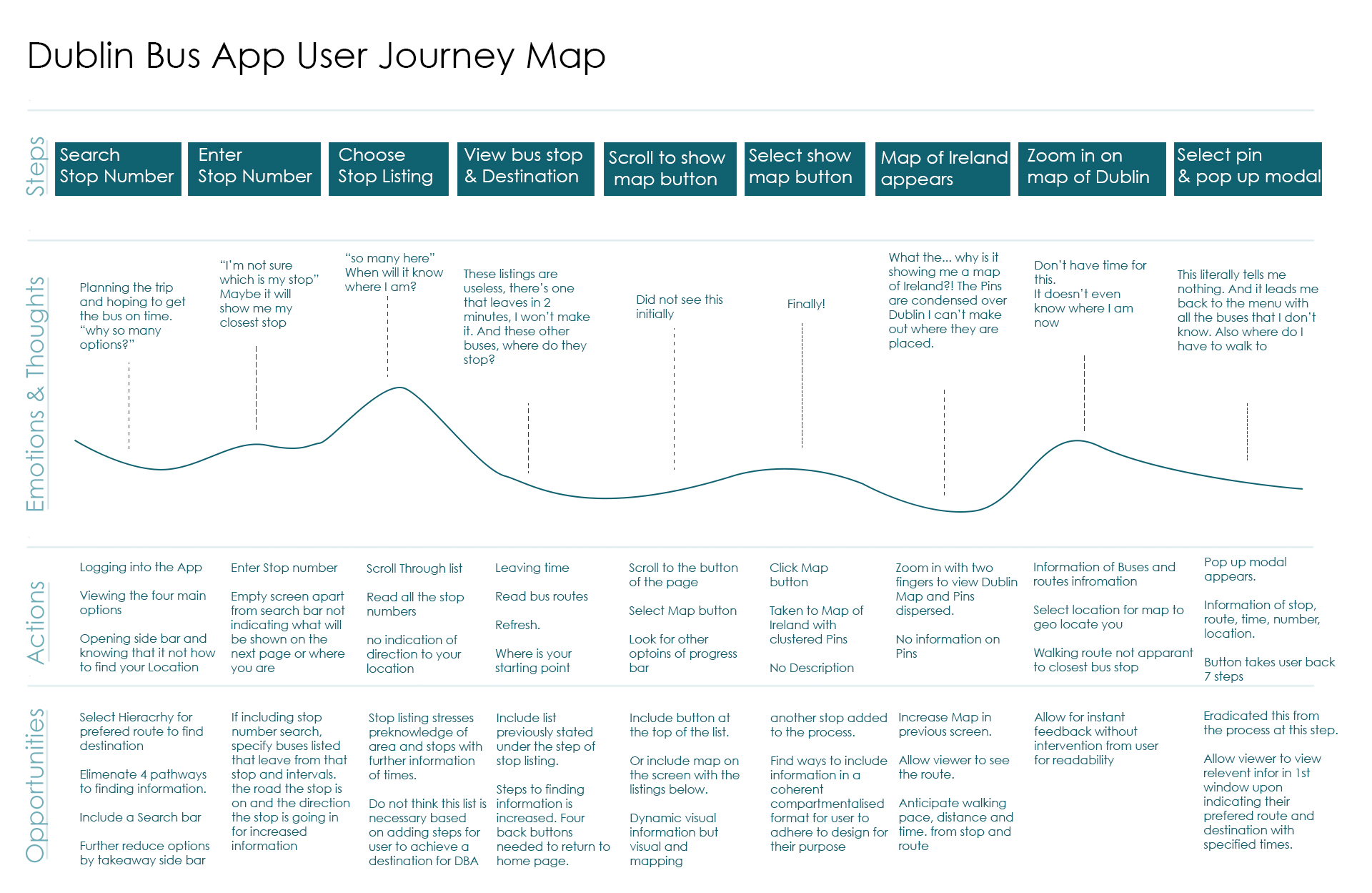
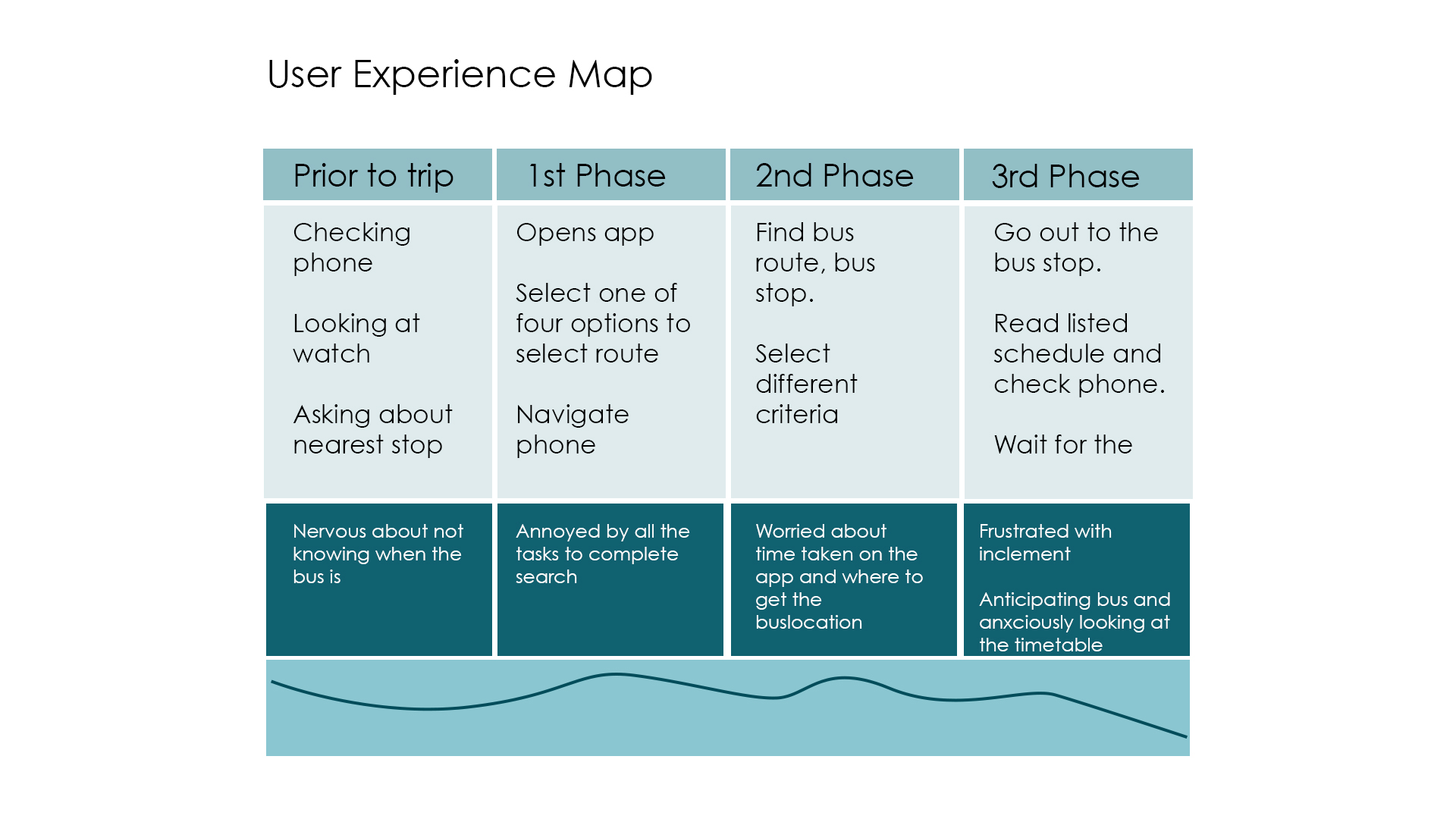
The outcome of our identifying statement is based on our heuristic evaluation of Dublin Bus App. Desktop research alongside guerrilla interviews and conducting a Task Analysis with a commuter resulted in cross-referencing feedback to conclude a statement. This is the introduction to commencing the first iterations of visual representation: “I want to go to go to Botanical Gardens in Dublin, arriving on time without hassle and waiting around when I leave the house.”
